- Home
- Tom Clancy
Armored Cav: A Guided Tour of an Armored Cavalry Regiment Page 4
Armored Cav: A Guided Tour of an Armored Cavalry Regiment Read online
Page 4
Well, first of all, DU penetrators perform a bit better than tungsten, and you never know when that little bit of extra performance will save your tank (and maybe your behind). Second, as a DU long-rod penetrates armor, the nose flakes into small particles. These particles become incandescent from the friction generated. When these particles are finally blasted into the tank’s interior, they ignite and burn violently, generating heat and pressure that is deadly to the crew and the tank (with its stored fuel and ammunition). This “pyrophoric” effect gives DU an advantage over tungsten in lethality.
Present U.S. APFSDS rounds, like the M829A1, are made of DU alloy and have a length-to-diameter ratio of around fifteen or twenty to one. That is, the round length is fifteen or twenty times the round’s diameter. But experimental APFSDS rounds, such as the M829A2 Desert Storm “Silver Bullet,” are about thirty to one. Decreasing the long-rod’s diameter improves its penetration capability. In short, the smaller-diameter penetrator forces a smaller area of armor to absorb the rod’s kinetic energy. Reduced diameter also means lower drag, so that the thinner round impacts the target at a higher velocity, with a reduced time of flight. Clearly this is bad news for a tank! On the downside, the smaller-diameter penetrator is more likely to break up as impact stresses are applied to the smaller cross-sectional area.
The velocity of an APFSDS round as it leaves the muzzle is tremendous. For the M256 120mm smoothbore gun on the M1A1 and M1A2 variants, the muzzle velocity is approximately 1,650 meters per second (about 5,413 feet per second), or about Mach 4. Because of this high speed and the projectile’s length, long-rod penetrators are fin-stabilized to prevent wobbling in flight. In essence, the long-rod penetrator is a 1.5-to-2-foot-long (.46-to-.61-meter-long), 10-lb. (4.54-kg.) metal dart. The need to accelerate the round to these speeds requires the use of a sabot, which holds the round in the middle of the gun barrel as it travels towards the breach. As the round exits the gun tube, aerodynamic drag tears the sabot from the penetrator, and the round flies on towards its target. This use of sabots—and the higher operating pressure and velocity of their rounds—is one of the reasons for the popularity of smoothbore tank cannons. Older rifled guns have spiral grooves in the barrel that impart a stabilizing spin to the round. But rifled guns cannot sustain the very high pressures and muzzle velocities of sabot rounds because the grooves would rapidly erode, making the tube useless after a few rounds.
Because of the slope and composition of modern armor, the APFSDS round must fly perfectly straight to penetrate even moderate armor. Any deviation from a stable trajectory and the APFSDS round could lose upwards of 80% of its penetrating power, or even snap in two under the enormous stress of impact. But if the long-rod penetrator hits a tank’s armor squarely, the highly localized pressure will deform and push the armor material out of the projectile’s path. In essence, the armor flows out of the way of the projectile as it travels and forms a penetration cavity. Once through the armor, the remnants of the APFSDS round and some armor fragments (spall) are injected into the tank’s interior, with serious consequences for the occupants: They are literally sitting ducks in a big steel barrel. Many APFSDS rounds were fired during Desert Storm, with stunning results. In one action, a British Army colonel hit and destroyed an Iraqi tank with an APFSDS round at over 5,400 meters (about 3.35 miles). That is really long-range shooting!
HEAT/Shaped-Charge Rounds—To kill an armored target, you must defeat the armor by blowing a hole in it. Current weapons technology provides two ways to do this. You can use the kinetic energy of a long-rod traveling at very high speed, typically a mile/1.6 kilometers per second. Or you can use the chemical energy released by an explosive “shaped charge,” which can be traveling quite slowly indeed.
HEAT rounds use a high-explosive shaped charge packed around a cone-shaped metallic liner. When detonated, the explosive causes the metal liner to collapse rapidly inward. The metal liner (usually composed of copper or aluminum) is heated and compressed by the energy of the explosion to form a jet with velocities as high as 8,000 to 9,000 meters per second (about 29,500 feet per second), or about Mach 25! The metal liner, however, is not a molten stream. It is still very solid, yet behaves like a fluid because of the tremendous pressures involved. Modern HEAT rounds have a long probe or a hollow nose cone containing the fusing mechanism. This provides a standoff distance between the warhead and the target’s surface. This standoff allows the jet to reach its optimum form, which maximizes its penetration capability.
When a shaped-charge jet hits a tank’s armor, the highly localized pressure deforms and pushes the armor material out of the jet’s path, thus forming a penetration cavity. If you think this sounds similar to what a long-rod penetrator does, you are correct. In both cases the weapons use high local pressure to exceed the armor’s mechanical strength. As the armor material is moved out of the way, the jet or the projectile occupies the space created and continues to burrow inward. In both cases the armor behaves like a fluid and flows around the intruding object. Shaped-charge munitions can penetrate approximately four to seven times the diameter of the warhead in millimeters of RHA, depending on the liner material and the type of target armor. When combination armor is involved, this rough rule doesn’t apply, because this type of armor was specifically designed to defeat HEAT rounds.
Explosively Formed Projectiles/Top Attack—Explosively formed projectiles (EFPs)—or flying plates, as they are often called—are kissing cousins to the shaped-charge warhead. Like the shaped charge, a high explosive is used to deform a metallic liner into a projectile. But this is where the similarity ends. Shaped-charge warheads use a conical-shaped liner, whereas the EFP uses a shallow hemispherical dish. When the explosive detonates, it deforms the dish into a solid slug or penetrator, rather than an elongated jet. The slug is aerodynamically stable (like a long-rod) and can reach speeds up to about 2,000 meters per second (about 6,560 feet per second), or about Mach 5 (fairly slow compared to the 8,000 or 9,000 meters per second reached by most HEAT-round jets). Consequently, EFPs penetrate less armor than shaped charges: A rough rule of thumb for EFP penetration is millimeters of RHA equal to the warhead’s diameter. (Recall that shaped-charge warheads can penetrate about four to seven times the warhead diameter of armor.) EFPs are used mainly in top-attack weapons or mines, where massive armor-penetration capability isn’t required. Examples of such weapons are the Swedish Bill and the American TOW-2B.
Because they circumvent the tank’s thickest armor, top-attack munitions have gained in popularity in recent times. In the case of an EFP slug against a T-72, the slug only has to penetrate about 200mm of top armor, not 454mm of frontal armor. Even tank main-gun rounds are being designed to take advantage of this indirect technique. Watch this technology, for it is the future.
There and Back Again: An Interview with General Fred Franks
Over twenty years ago, at the close of the Vietnam War, it was hard to find an organization held in less respect than the U.S. Army. An American force of over 500,000, most of them U.S. Army personnel, equipped with U.S. Army equipment, and trained to U.S. Army doctrine, had just done something unknown in the history of American arms. They had won every battle and engagement, but left Southeast Asia with their Air Force and Navy comrades without victory. The political reasons for the defeat in Vietnam were complex and controversial, but people still found it easy to blame the leadership, personnel, and equipment of “the big green machine” (rather than the politicians and bureaucrats who truly deserve the blame) for America’s first lost war.
Yet, beneath this defeat and waste lay the first roots of the reborn Army that would crush Iraq in four days and set new standards for the art of warfare. With twenty years of hindsight, it is easy to see just how deeply those roots extend. Certainly to General Creighton Abrams, the Army Chief of Staff after Vietnam, who as a young officer in World War II led the relief column that first reached the besieged town of Bastogne during the Battle of the Bulge. In his mind was a dream of a new prof
essional army.
There also was the professional corps of young officers that had served in Vietnam during the war. Those who chose to stay in the Army and “stick it out” surely made a promise to themselves: “If we ever reach the rank of general, things are going to be different!” Men like Colin Powell, who had overcome the racism of an Army struggling to master the hard lessons of integration. Armor officers like Butch Funk and Infantry officers like Pete Taylor, who came home with reputations as tough as their weapons. And guys like Barry McCaffrey and Fred Franks, who left bones and limbs on the killing fields of Southeast Asia.
Profoundly affected by the sacrifice, the loss, and the waste they had experienced, a generation of officers set out to rebuild the Army so that such a tragedy would never happen again. They did this as an act of honoring and keeping faith with those who were lost and maimed, to show that those soldiers had not suffered in vain. Thanks to their integrity, intelligence, and skill, America has an army which other nations not only envy and respect, but fear. Military analysts for decades pointed to the Israeli Defense Force as the model of how an army should work. Now, even the vaunted Israeli force which held the Golan (as I described in The Sum of All Fears) and invaded Egypt in 1973 seems at times to be considered a second-class force compared to the units that America can field.
General Fred Franks, Commander of the U.S. Army, Training and Doctrine Command (TRADOC), Ft. Monroe, Virginia.
OFFICIAL. U.S. ARMY PHOTO
To get a better idea just what the U.S. Army has gone through to reach this point, let’s have a chat with General Frederick Franks. General Franks is currently the commanding officer of the U.S. Army’s Training and Doctrine Command (TRADOC), headquartered at Fort Monroe, Virginia, beside the old fortress that overlooked the first battle between the ironclad vessels USS Monitor and CSS Virginia (better known as the Merrimac). Commanded by a four-star general, the Army’s highest rank, TRADOC is responsible for the organization, tactics, and training of the U.S. Army. It is here that the Army’s way of fighting is defined, documented, and disseminated to roughly one million U.S. Army, U.S. Army Reserve, and National Guard troops that together make up what is known as the “Total Force.”
Frederick Melvin Franks, Jr., was born on November 1st, 1936, in West Lawn, Pennsylvania. After growing up in Pennsylvania and attending one year at Lehigh University, he entered the U.S. Military Academy at West Point, New York, on July 5th, 1955. He graduated on the 3rd of June, 1959, and was commissioned a second lieutenant of Armor. Let’s let General Franks tell the story from there.
The 1960s brought on significant changes for the U.S. Army, as the focus of American foreign policy switched from Europe and Cuba to the Far East and Vietnam. These started the armed forces of the United States in general, and the U.S. Army specifically, on a long slide that would not stop until the doldrums of the 1970s. The war itself brought on a time of great personal pain for Fred Franks, as he lost most of his left leg below the knee to enemy fire during the invasion of Cambodia in 1970. As it turned out, his climb back to becoming an effective soldier paralleled the rebirth of the Army as it struggled to come back from the nightmare of Vietnam.
1 The mid-1970s were the low-water mark for the modern American Army. Battered by its experience in Southeast Asia, and considered a third-rate force compared to the armies of countries like Israel, Great Britain, and even the former Soviet Union, it had to rebuild from scratch with a new, all-volunteer system of recruiting—offering incoming soldiers low pay and poor living conditions—while trying to bring a new family of weapons into production. A focus on possible NATO conflict with the Warsaw Pact dominated Army planning and procurement for the next twenty years. Out of this background there emerged a new theory of battle called “maneuver warfare.” For Fred Franks, then a mid-level officer, it was a time to be in the middle of all the institutional growth and development at places like the Department of the Army, as well as the new organization called TRADOC.
2 As terrible as the 1970s had been, the 1980s came upon the Army like a breath of fresh air. For one thing, the “big five” weapons systems began to come on-line. And the early years of Reagan’s presidency guaranteed that plenty of money was available to procure these and other tools of war. But more was happening than just the building and fielding of weapons. Throughout the Army, an intellectual rebirth of war-fighting skills was in full bloom, especially among the young, aggressive leaders coming into the Army from all over the country. This new energy and aggressiveness was accepted and channeled into new ideas and doctrine by the leaders that came out of the Vietnam era. Leaders like Fred Franks. And so the 1980s were a time of great opportunity for General Franks. Because of his outstanding performance in command of progressively larger and more important units in Europe, he rose from colonel to lieutenant general (three stars) in less than eight years.
34567 By the late 1980s the first signs of a revolution in Eastern Europe were beginning to take shape. Gorbachev came into power in the mid-1980s and began major social reforms in the Soviet Union. But by late 1989, the reform movement had spread to the other members of the Warsaw Pact. It would result in the fall of the Berlin Wall and the Iron Curtain, and the dissolution of the Warsaw Pact. In one incredible winter, the threat in Europe vanished, the Cold War ended in victory for NATO and the forces of democracy, and the Warsaw Pact withered away.
August 1990 brought the Iraqi invasion of Kuwait and the first commitment of U.S. military personnel to Southwest Asia. While at first there was no requirement for the VII Corps commanded by General Franks to go to the Middle East, things were to change rapidly. When summer turned to fall, and the forces of Saddam Hussein’s invading army still occupied Kuwait, President George Bush decided that military action was necessary to evict them. General Franks tells what happened next.
Once the movement of VII Corps to Saudi Arabia had started, it was necessary for General Franks and his staff to get the corps into position and make them ready for combat. Much new equipment and a lot of hard work and training were required to make the corps ready for the tasks ahead. Because of the size of the force that the general had been assigned, this required several months. For General Franks was about to command a force roughly the size of General George Patton’s Third Army (in the winter of 1944), but with the addition of its own small air force of helicopters. As it was configured in the Persian Gulf, VII Corps was the largest armored formation ever commanded by one man. And it had a special mission: to find and destroy the armored units of Iraq’s elite Republican Guards.8
9 By mid-February 1991, the air campaign of Operation Desert Storm had been going on for almost a month, and the entire Allied Coalition army was lined up from the shores of the Persian Gulf to the sands of western Saudi Arabia. As the ground war (called Operation Desert Saber) kicked off on G-Day, February 24th, 1991, VII Corps began to move towards its target, the Republican Guards divisions hovering up along the old Iraq/Kuwait border:
The lineup of VII Corps and their Iraqi opposition at the start of Operation Desert Saber, the ground portion of the 1991 Persian Gulf War. The main target of the VII Corps advance was the Iraqi Republican Guards divisions shown here. They included the Tawakalna (T Gd), Hammurabi (H Gd), and Medina (M Gd) divisions, as well as a number of Iraqi formations. This graphic shows the VII Corps units breaching the fortified berm, as well as the deceptive feint by the 1st Cavalry Division (Armored) up the Wadi al-Batin and back.
JACK RYAN ENTERPRISES, LTD., BY LAURA ALPHER
After turning VII Corps east to engage the units of the Republican Guards, a series of general engagements ensues. The 2nd Armored Cavalry Regiment (2nd ACR) engages the Tawakalna (T Gd) Division in the Battle of 73 Easting, while the 1st and 3rd Armored Divisions (1st and 3rd respectively) move up. The British 1st Armoured Division (1st UK) continues to engage regular Iraqi units along the “inside” of the VII Corps zone, while the 1st Infantry Division acts as the VII Corps reserve.
JACK RYAN ENTERPRISES, LTD,,
BY LAURA ALPHER
1011 After running north for the first two days of the offensive, it was time for General Franks to make the first of several key decisions. In this case, whether to continue north, or to move east to make contact with the divisions of the Republican Guards. We’ll let General Franks tell the story:
12 As the VII Corps moved east on the morning and afternoon of the 26th, still with very little in the way of air support and reconnaissance, they began to make increasing contact with Iraqi units. Then, the contact that the corps had been working for occurred. The lead elements of three armored cavalry troops of the 2nd ACR, as well as other units of the corps, began to crash into the screen elements of the three Republican Guards divisions in their sector:
Day 4 of the ground war found the VII involved in a battle of annihilation with the units of the Iraqi Republican Guards. General Franks committed the entire corps to attacks to destroy entire Iraqi formations. In these attacks, the Tawakalna (T Gd) Division is virtually destroyed, the Hammurabi (H Gd) Division is heavily damaged, and the Medina (M Gd) Division is rendered combat-ineffective. By this time a general Iraqi retreat is in effect, trying to escape from the VII Corps assaults.

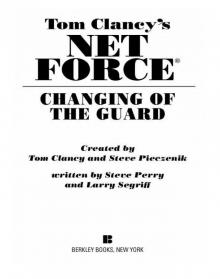 Changing of the Guard
Changing of the Guard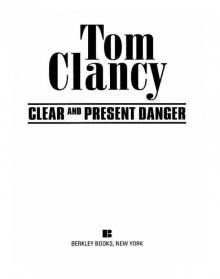 Clear and Present Danger
Clear and Present Danger Hounds of Rome
Hounds of Rome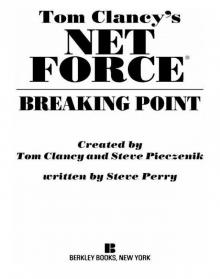 Breaking Point
Breaking Point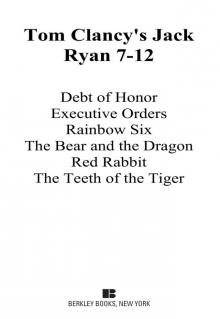 Tom Clancy's Jack Ryan Books 7-12
Tom Clancy's Jack Ryan Books 7-12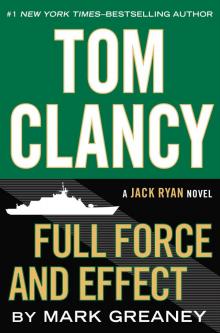 Full Force and Effect
Full Force and Effect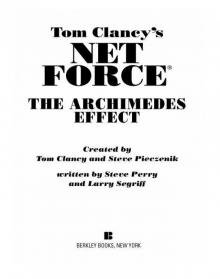 The Archimedes Effect
The Archimedes Effect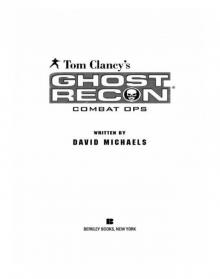 Combat Ops
Combat Ops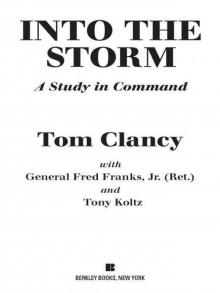 Into the Storm: On the Ground in Iraq
Into the Storm: On the Ground in Iraq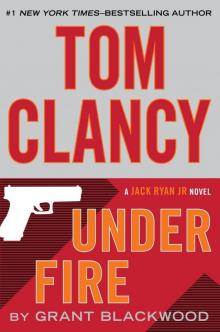 Under Fire
Under Fire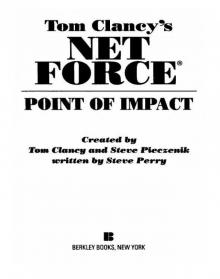 Point of Impact
Point of Impact Red Rabbit
Red Rabbit Rainbow Six
Rainbow Six The Hunt for Red October
The Hunt for Red October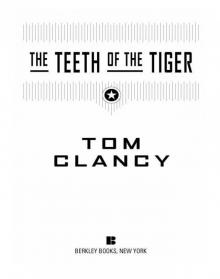 The Teeth of the Tiger
The Teeth of the Tiger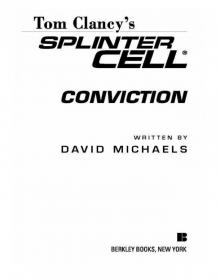 Conviction (2009)
Conviction (2009)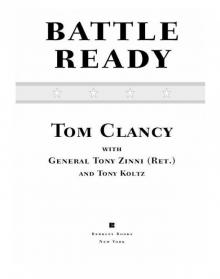 Battle Ready
Battle Ready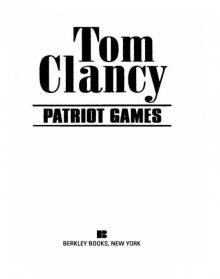 Patriot Games
Patriot Games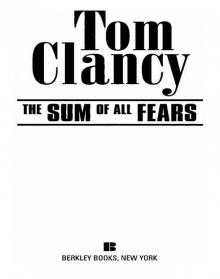 The Sum of All Fears
The Sum of All Fears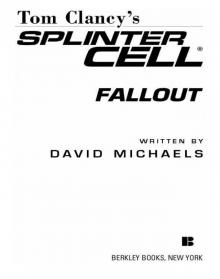 Fallout (2007)
Fallout (2007) Red Storm Rising
Red Storm Rising The Cardinal of the Kremlin
The Cardinal of the Kremlin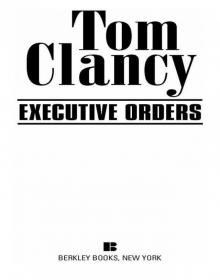 Executive Orders
Executive Orders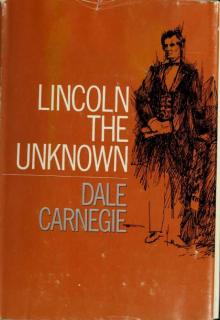 Lincoln, the unknown
Lincoln, the unknown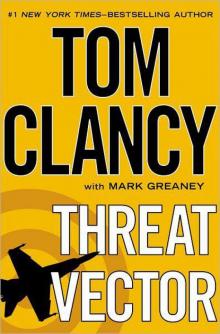 Threat Vector
Threat Vector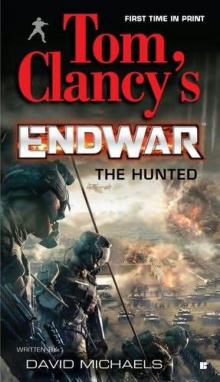 The Hunted
The Hunted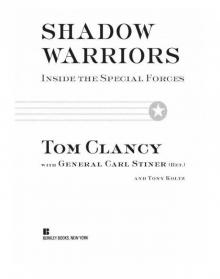 Shadow Warriors: Inside the Special Forces
Shadow Warriors: Inside the Special Forces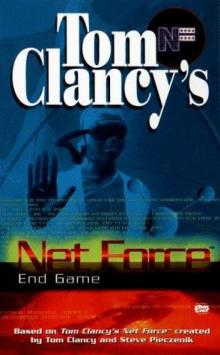 End Game
End Game Special Forces: A Guided Tour of U.S. Army Special Forces
Special Forces: A Guided Tour of U.S. Army Special Forces Locked On
Locked On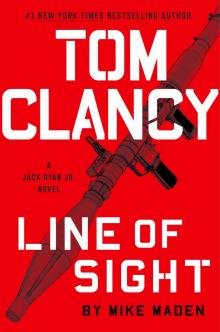 Line of Sight
Line of Sight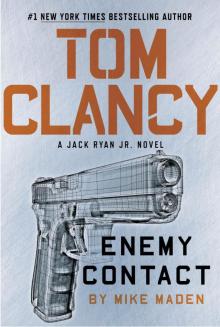 Tom Clancy Enemy Contact - Mike Maden
Tom Clancy Enemy Contact - Mike Maden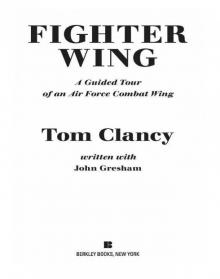 Fighter Wing: A Guided Tour of an Air Force Combat Wing
Fighter Wing: A Guided Tour of an Air Force Combat Wing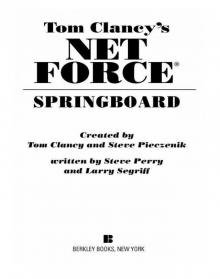 Springboard
Springboard Line of Sight - Mike Maden
Line of Sight - Mike Maden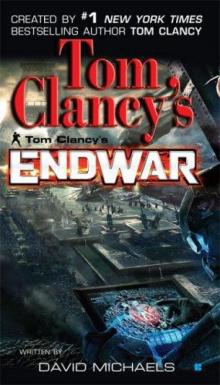 EndWar
EndWar Dead or Alive
Dead or Alive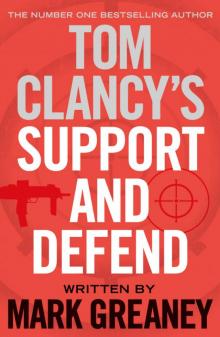 Tom Clancy Support and Defend
Tom Clancy Support and Defend Checkmate
Checkmate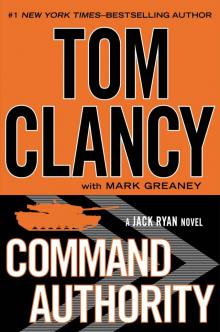 Command Authority
Command Authority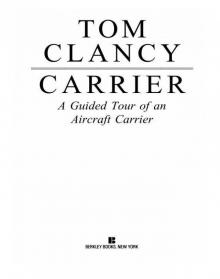 Carrier: A Guided Tour of an Aircraft Carrier
Carrier: A Guided Tour of an Aircraft Carrier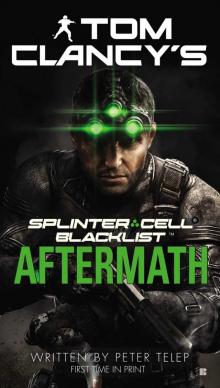 Blacklist Aftermath
Blacklist Aftermath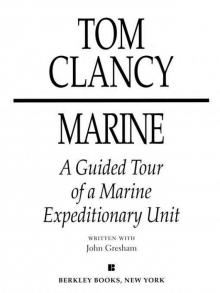 Marine: A Guided Tour of a Marine Expeditionary Unit
Marine: A Guided Tour of a Marine Expeditionary Unit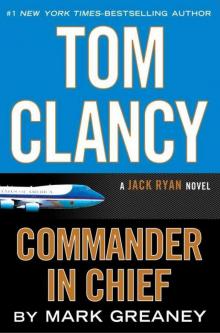 Commander-In-Chief
Commander-In-Chief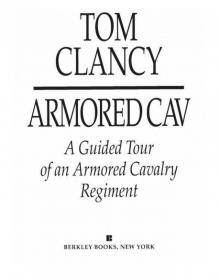 Armored Cav: A Guided Tour of an Armored Cavalry Regiment
Armored Cav: A Guided Tour of an Armored Cavalry Regiment Tom Clancy's Jack Ryan Books 1-6
Tom Clancy's Jack Ryan Books 1-6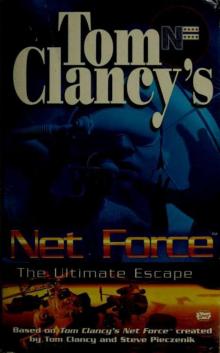 The Ultimate Escape
The Ultimate Escape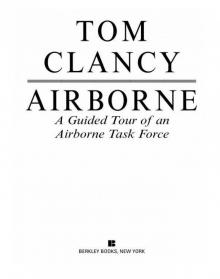 Airborne: A Guided Tour of an Airborne Task Force
Airborne: A Guided Tour of an Airborne Task Force Debt of Honor
Debt of Honor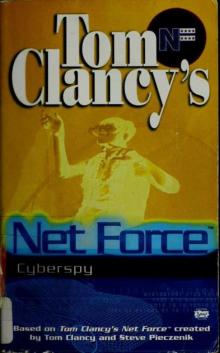 Cyberspy
Cyberspy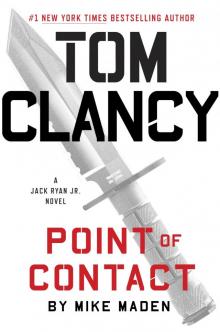 Point of Contact
Point of Contact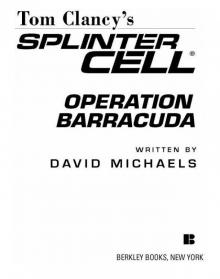 Operation Barracuda (2005)
Operation Barracuda (2005)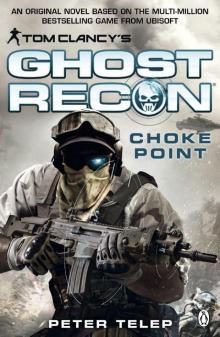 Choke Point
Choke Point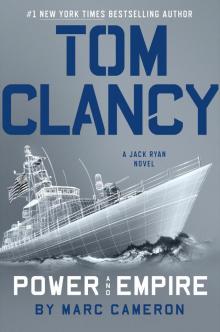 Power and Empire
Power and Empire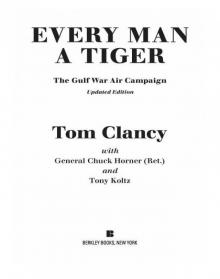 Every Man a Tiger: The Gulf War Air Campaign
Every Man a Tiger: The Gulf War Air Campaign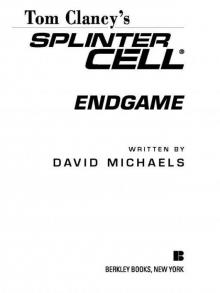 Endgame (1998)
Endgame (1998)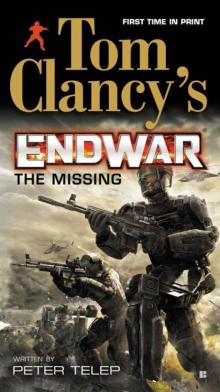 EndWar: The Missing
EndWar: The Missing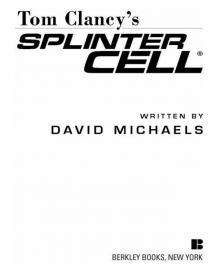 Splinter Cell (2004)
Splinter Cell (2004)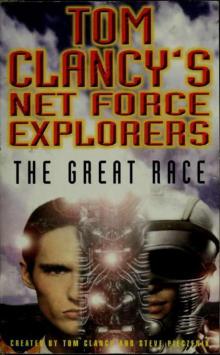 The Great Race
The Great Race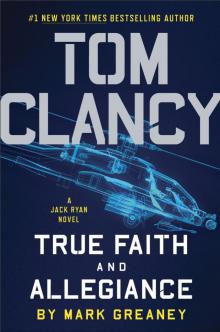 True Faith and Allegiance
True Faith and Allegiance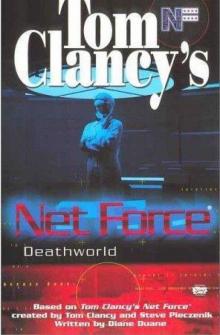 Deathworld
Deathworld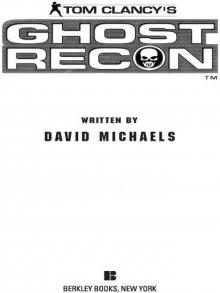 Ghost Recon (2008)
Ghost Recon (2008)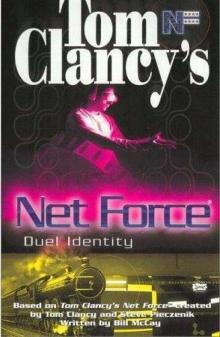 Duel Identity
Duel Identity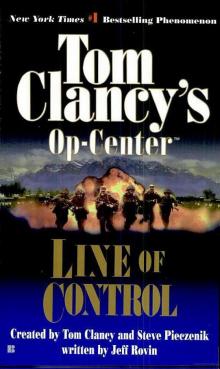 Line of Control o-8
Line of Control o-8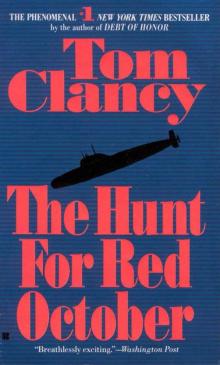 The Hunt for Red October jr-3
The Hunt for Red October jr-3 Hidden Agendas nf-2
Hidden Agendas nf-2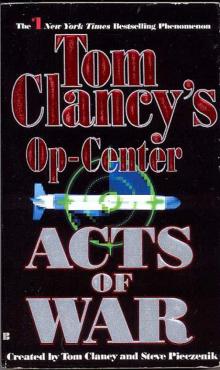 Acts of War oc-4
Acts of War oc-4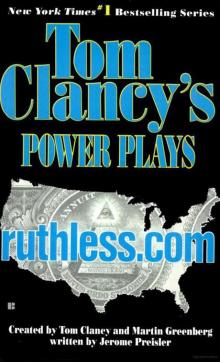 Ruthless.Com pp-2
Ruthless.Com pp-2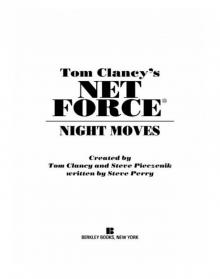 Night Moves
Night Moves The Hounds of Rome - Mystery of a Fugitive Priest
The Hounds of Rome - Mystery of a Fugitive Priest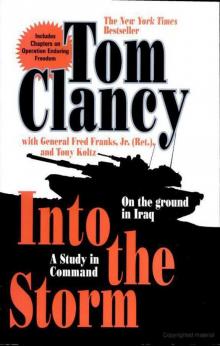 Into the Storm: On the Ground in Iraq sic-1
Into the Storm: On the Ground in Iraq sic-1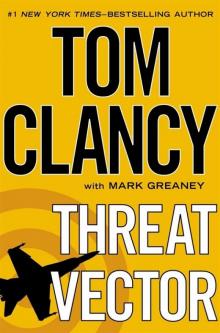 Threat Vector jrj-4
Threat Vector jrj-4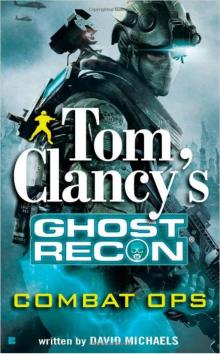 Combat Ops gr-2
Combat Ops gr-2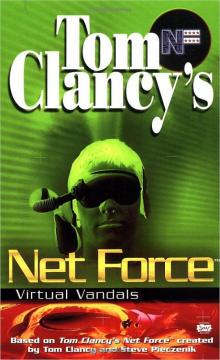 Virtual Vandals nfe-1
Virtual Vandals nfe-1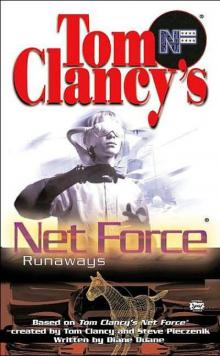 Runaways nfe-16
Runaways nfe-16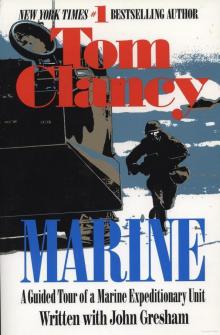 Marine: A Guided Tour of a Marine Expeditionary Unit tcml-4
Marine: A Guided Tour of a Marine Expeditionary Unit tcml-4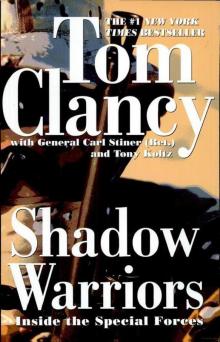 Shadow Warriors: Inside the Special Forces sic-3
Shadow Warriors: Inside the Special Forces sic-3 Jack Ryan Books 1-6
Jack Ryan Books 1-6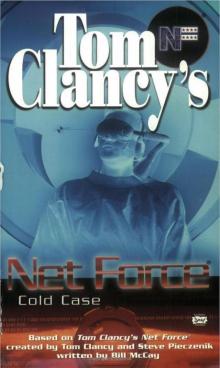 Cold Case nfe-15
Cold Case nfe-15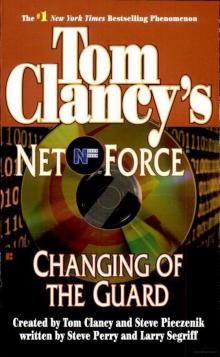 Changing of the Guard nf-8
Changing of the Guard nf-8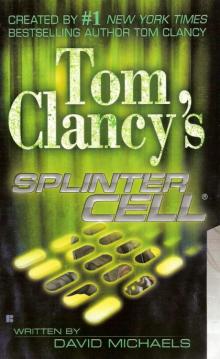 Splinter Cell sc-1
Splinter Cell sc-1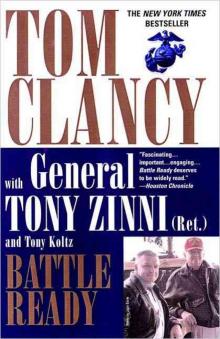 Battle Ready sic-4
Battle Ready sic-4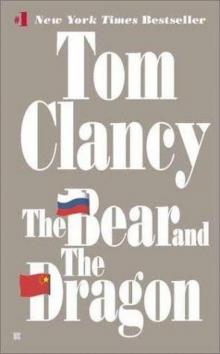 The Bear and the Dragon jrao-11
The Bear and the Dragon jrao-11 Fighter Wing: A Guided Tour of an Air Force Combat Wing tcml-3
Fighter Wing: A Guided Tour of an Air Force Combat Wing tcml-3 Patriot Games jr-1
Patriot Games jr-1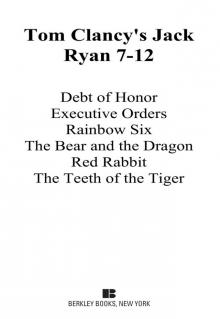 Jack Ryan Books 7-12
Jack Ryan Books 7-12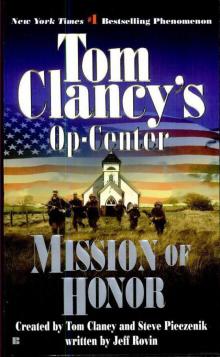 Mission of Honor o-9
Mission of Honor o-9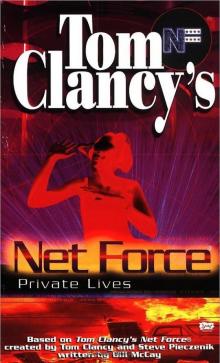 Private Lives nfe-9
Private Lives nfe-9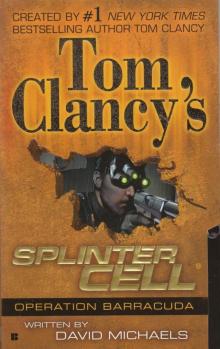 Operation Barracuda sc-2
Operation Barracuda sc-2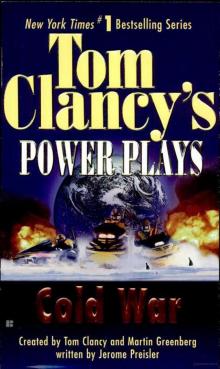 Cold War pp-5
Cold War pp-5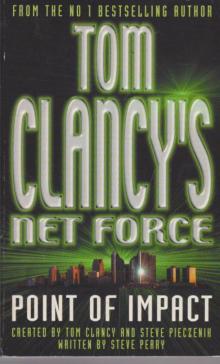 Point of Impact nf-5
Point of Impact nf-5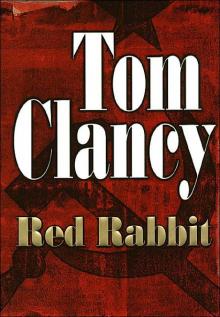 Red Rabbit jr-9
Red Rabbit jr-9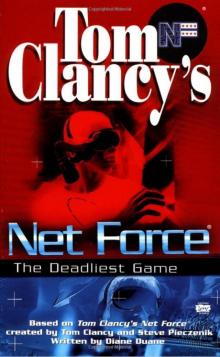 The Deadliest Game nfe-2
The Deadliest Game nfe-2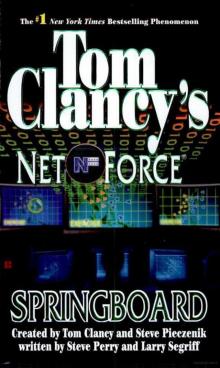 Springboard nf-9
Springboard nf-9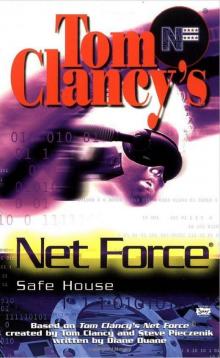 Safe House nfe-10
Safe House nfe-10 EndWar e-1
EndWar e-1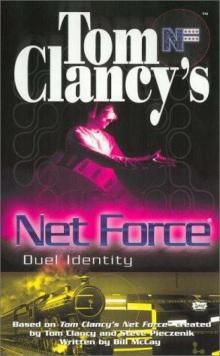 Duel Identity nfe-12
Duel Identity nfe-12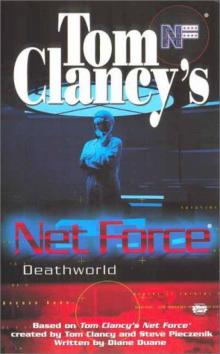 Deathworld nfe-13
Deathworld nfe-13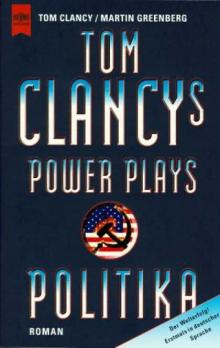 Politika pp-1
Politika pp-1 Rainbow Six jr-9
Rainbow Six jr-9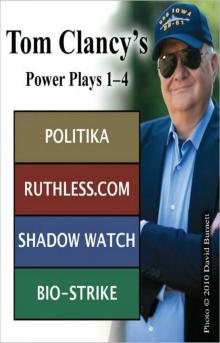 Tom Clancy's Power Plays 1 - 4
Tom Clancy's Power Plays 1 - 4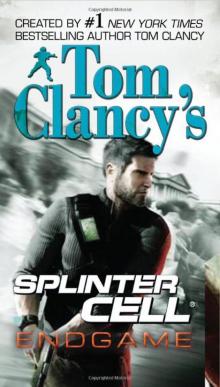 Endgame sc-6
Endgame sc-6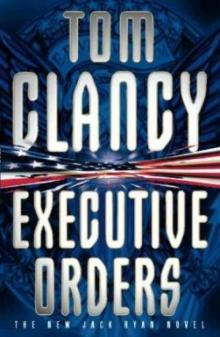 Executive Orders jr-7
Executive Orders jr-7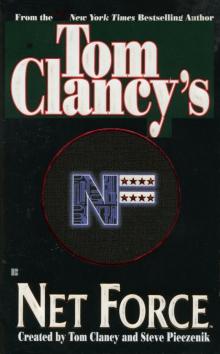 Net Force nf-1
Net Force nf-1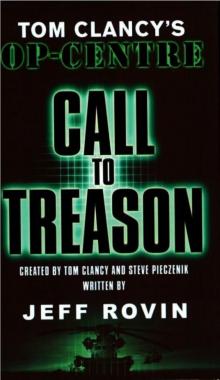 Call to Treason o-11
Call to Treason o-11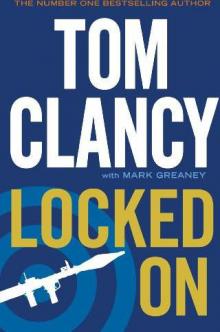 Locked On jrj-3
Locked On jrj-3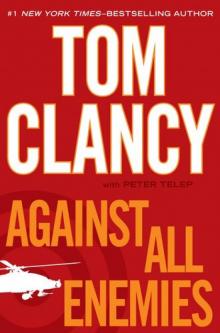 Against All Enemies
Against All Enemies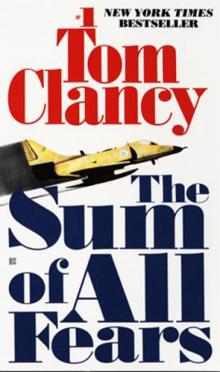 The Sum of All Fears jr-7
The Sum of All Fears jr-7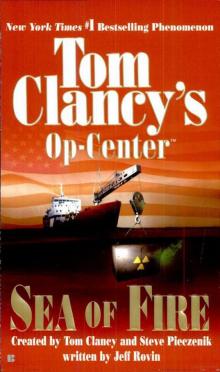 Sea of Fire o-10
Sea of Fire o-10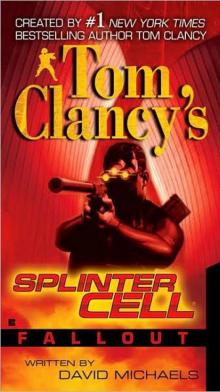 Fallout sc-4
Fallout sc-4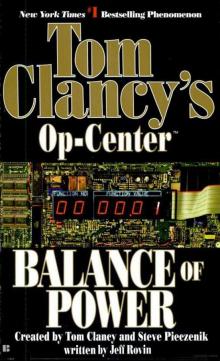 Balance of Power o-5
Balance of Power o-5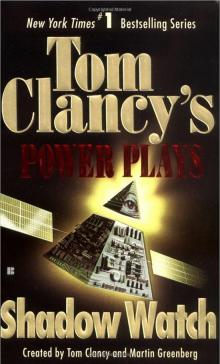 Shadow Watch pp-3
Shadow Watch pp-3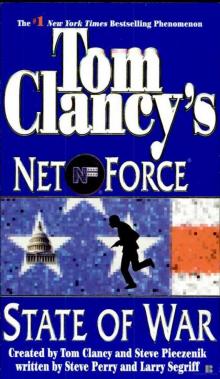 State of War nf-7
State of War nf-7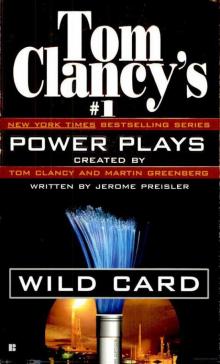 Wild Card pp-8
Wild Card pp-8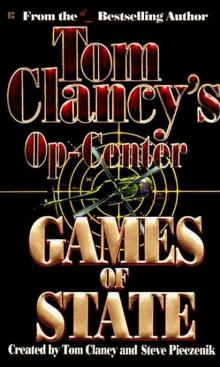 Games of State o-3
Games of State o-3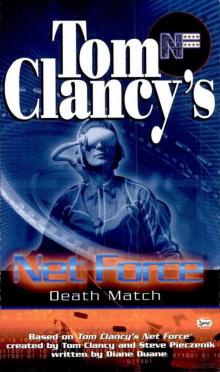 Death Match nfe-18
Death Match nfe-18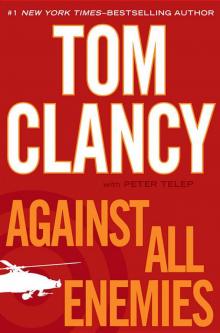 Against All Enemies mm-1
Against All Enemies mm-1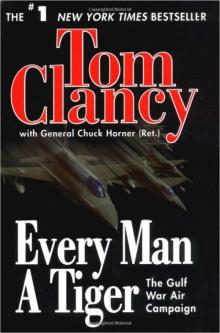 Every Man a Tiger: The Gulf War Air Campaign sic-2
Every Man a Tiger: The Gulf War Air Campaign sic-2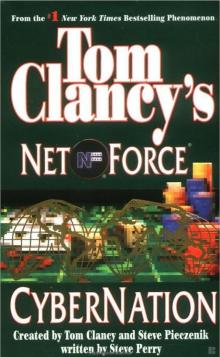 Cybernation nf-6
Cybernation nf-6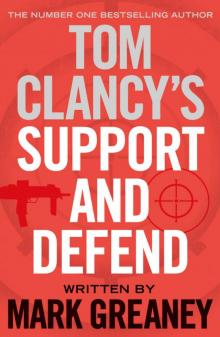 Support and Defend
Support and Defend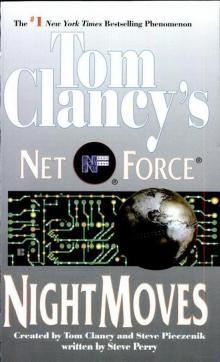 Night Moves nf-3
Night Moves nf-3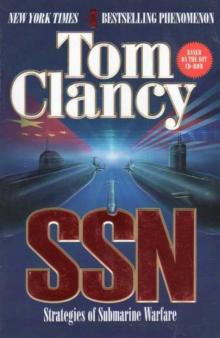 SSN
SSN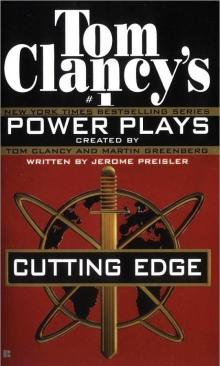 Cutting Edge pp-6
Cutting Edge pp-6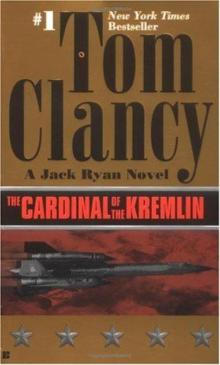 The Cardinal of the Kremlin jrao-5
The Cardinal of the Kremlin jrao-5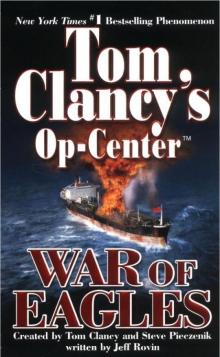 War of Eagles o-12
War of Eagles o-12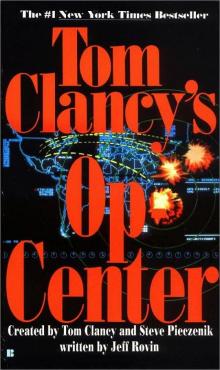 Op-Center o-1
Op-Center o-1 Mirror Image o-2
Mirror Image o-2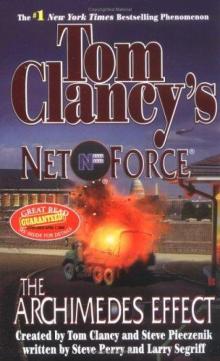 The Archimedes Effect nf-10
The Archimedes Effect nf-10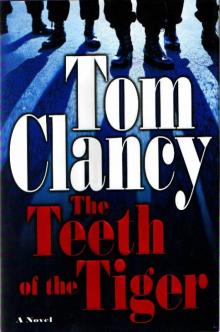 Teeth of the Tiger jrj-1
Teeth of the Tiger jrj-1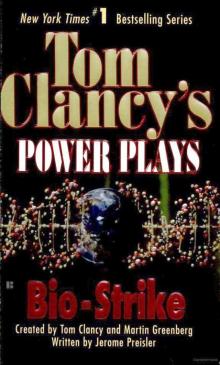 Bio-Strike pp-4
Bio-Strike pp-4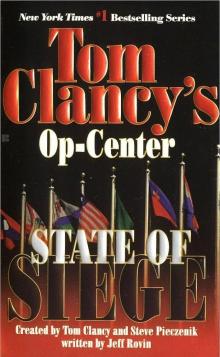 State of Siege o-6
State of Siege o-6 Debt of Honor jr-6
Debt of Honor jr-6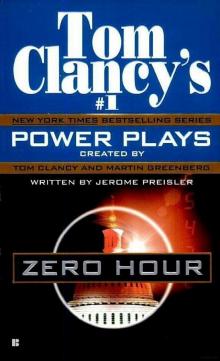 Zero Hour pp-7
Zero Hour pp-7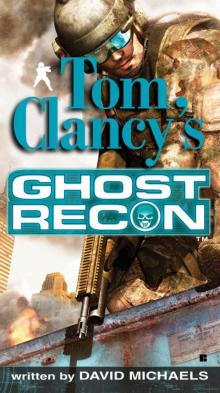 Ghost Recon gr-1
Ghost Recon gr-1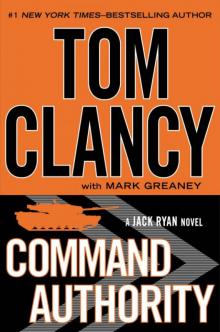 Command Authority jr-10
Command Authority jr-10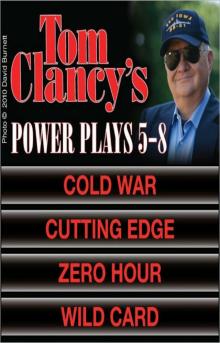 Tom Clancy's Power Plays 5 - 8
Tom Clancy's Power Plays 5 - 8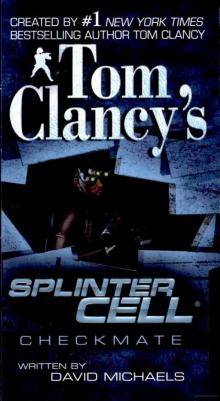 Checkmate sc-3
Checkmate sc-3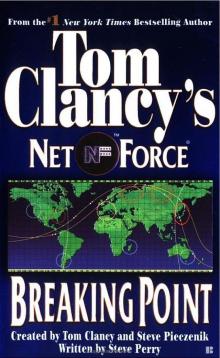 Breaking Point nf-4
Breaking Point nf-4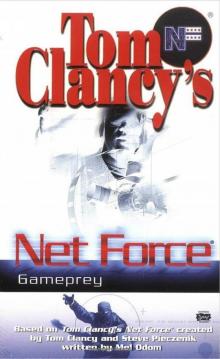 Gameprey nfe-11
Gameprey nfe-11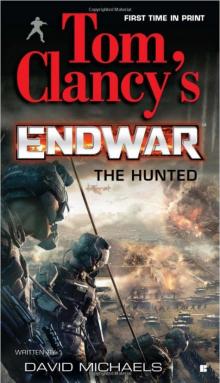 The Hunted e-2
The Hunted e-2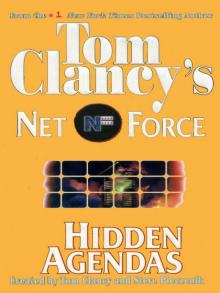 Hidden Agendas
Hidden Agendas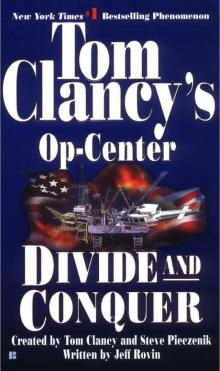 Divide and Conquer o-7
Divide and Conquer o-7